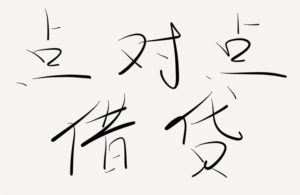 Announced earlier this week, China has finally revealed its regulatory approach to online lending. To put this into perspective, peer to peer lending is huge in China – the largest online lending market in the world. The rapid ascension of P2P lending was driven by an equation of old finance being ill-equipped to provide credit to both consumers and SMEs, a tacit government policy of providing access to capital and the wide adoption of smartphones where many financial transactions occur. Chinese officials recognized that a softening economy would be put further at risk if the nascent online lending industry was not allowed to grow with short sighted regulation. The flipside of rapid growth has been epic cases of fraud but now the government is cracking down.
Announced earlier this week, China has finally revealed its regulatory approach to online lending. To put this into perspective, peer to peer lending is huge in China – the largest online lending market in the world. The rapid ascension of P2P lending was driven by an equation of old finance being ill-equipped to provide credit to both consumers and SMEs, a tacit government policy of providing access to capital and the wide adoption of smartphones where many financial transactions occur. Chinese officials recognized that a softening economy would be put further at risk if the nascent online lending industry was not allowed to grow with short sighted regulation. The flipside of rapid growth has been epic cases of fraud but now the government is cracking down.
Xinhua reported that 13 restrictions have been added to peer to peer lenders. The rules from the China Banking Regulatory Commission (CBRC) include prohibiting P2P lenders from accepting deposits, pooling investors money, selling financial products, providing guarantees and more. There is also a cap on the amount consumers and businesses can borrow. For consumers the cap stands at 200,000 yuan on one platform a 1 million yuan over multiple platforms. For businesses the cap is 1 million yuan on a single platform and 5 million yuan over multiple lenders. P2P operators will not be allowed to operate “off-line” – an interesting twist. Platforms must adhere to some transparency requirements including lending statistics and the rate of defaults. A blacklist will be created to block bad actors from becoming engaged in the P2P lending industry.
Reaction by industry participants has been mixed – so far.
Reuters is reporting that established P2P lenders shrugged off the rules. Cliff Zhang, CEO of PPDAI, stated;
“Before the rules were released, people didn’t have judgement on which platform is good, but now they can understand it. Investors will definitely withdraw money from the platforms which are violating the rules.”
 The sentiment appears to be that larger platforms are prepared to adapt with many of the requirements already in place. For smaller, undercapitalized firms they may be forced to consolidate, pivot or disappear. There is a one year grace period for the new rules allowing P2P lenders time to comply.
The sentiment appears to be that larger platforms are prepared to adapt with many of the requirements already in place. For smaller, undercapitalized firms they may be forced to consolidate, pivot or disappear. There is a one year grace period for the new rules allowing P2P lenders time to comply.
One platform that took a bit of a hit was US listed P2P lender Yirendai (NYSE:YRD), part of CreditEase. Yirendai shares have tanked on the news as investors and operators scramble to review and react.
[scribd id=322153601 key=key-b4eildJr7PieFABZrBZJ mode=scroll]

